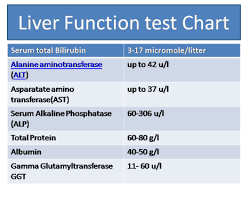Understanding blood glucose units is crucial for individuals managing diabetes or monitoring their blood sugar levels. The measurement of blood glucose is typically expressed in one of two units: milligrams per deciliter (mg/dL) or millimoles per liter (mmol/L). These units are used globally, but their preference varies by country and region. In the United States, mg/dL is the standard unit of measurement, while in many other parts of the world, including Canada and the UK, mmol/L is predominantly used.
History of Blood Glucose Measurement
The measurement of blood glucose has a history that dates back to the early 20th century, with significant advancements over the years. Initially, blood glucose was measured through urine tests, which were not very accurate. The development of the first glucose meters in the 1970s revolutionized diabetes management by allowing individuals to monitor their blood glucose levels directly from a blood sample. These early meters expressed results in mg/dL, which became the standard unit in many countries, particularly in North America.
Understanding mg/dL
Milligrams per deciliter (mg/dL) is a unit of measurement that represents the amount of glucose in the blood per deciliter (one-tenth of a liter) of blood. Normal blood glucose levels typically range from 70 to 99 mg/dL when fasting and less than 140 mg/dL two hours after a meal. For individuals with diabetes, the target blood glucose levels may vary based on the type of diabetes, the time of day, and other factors, but generally, the aim is to keep fasting blood glucose below 130 mg/dL and postprandial (after meal) glucose below 180 mg/dL.
Understanding mmol/L
Millimoles per liter (mmol/L) is another common unit used to express blood glucose levels. It represents the amount of glucose in the blood per liter of blood, measured in millimoles. Normal blood glucose levels in mmol/L range from approximately 3.9 to 6.1 mmol/L when fasting and less than 7.8 mmol/L two hours after eating. The conversion between mg/dL and mmol/L is straightforward: to convert mg/dL to mmol/L, divide by 18 (since 1 mmol/L is equivalent to 18 mg/dL).
Conversion Between Units
For individuals who need to communicate their blood glucose levels across different regions or healthcare systems, understanding how to convert between mg/dL and mmol/L is essential. The conversion factor is based on the molecular weight of glucose. Here is a simple way to convert:
- To convert mg/dL to mmol/L, divide by 18.
- To convert mmol/L to mg/dL, multiply by 18.
For example, a blood glucose level of 90 mg/dL is equivalent to 5 mmol/L (90 / 18 = 5).
Global Variations and Preferences
The preference for using either mg/dL or mmol/L varies significantly around the world. In the United States, healthcare providers and patients predominantly use mg/dL, while in countries like the UK, Canada, and Australia, mmol/L is the standard. This variation can sometimes lead to confusion, especially for travelers or individuals consulting healthcare providers in different countries. Understanding both units and how to convert between them is essential for effective diabetes management and communication with healthcare providers.
Technological Advancements
Recent years have seen significant technological advancements in the measurement and monitoring of blood glucose levels. Continuous glucose monitors (CGMs) and flash glucose monitors allow for real-time tracking of glucose levels throughout the day, providing valuable insights into glucose trends and patterns. These devices often have the capability to display results in both mg/dL and mmol/L, catering to users’ preferences and regional standards.
Future Developments
The future of blood glucose measurement looks promising, with ongoing research into non-invasive glucose monitoring technologies and the integration of artificial intelligence (AI) into diabetes management systems. These advancements aim to make blood glucose monitoring more convenient, accurate, and accessible, ultimately improving the quality of life for individuals with diabetes. As technology evolves, understanding the basics of blood glucose units and how to navigate between them will remain a fundamental aspect of effective diabetes care.
Frequently Asked Questions
What is the normal range for blood glucose levels in mg/dL?
+Normal blood glucose levels typically range from 70 to 99 mg/dL when fasting and less than 140 mg/dL two hours after a meal.
How do I convert mmol/L to mg/dL?
+To convert mmol/L to mg/dL, multiply the value in mmol/L by 18.
Why are there different units for measuring blood glucose?
+The use of different units (mg/dL and mmol/L) stems from historical and regional preferences. Understanding both units is important for effective communication and management of diabetes.
In conclusion, blood glucose units are a critical component of diabetes management, with mg/dL and mmol/L being the two predominant units of measurement. Understanding these units, their conversion, and the reasons behind the global variation in preference is essential for individuals with diabetes and healthcare providers alike. As technology continues to advance and global communication becomes more streamlined, the importance of being adept in both units will only continue to grow.

